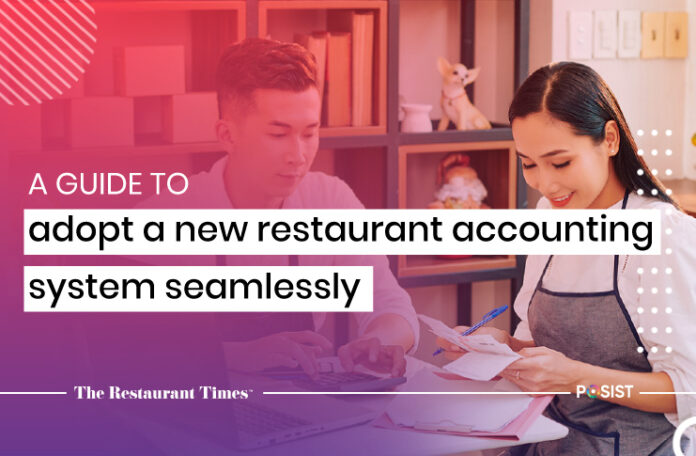Most people start a new restaurant based on their passion for food and hospitality. They aim to hire the best cook and offer great customer service but often fail. Most new restaurants shut down because of bad decisions and practices. One of them is not adopting a restaurant accounting system. It eases operations and improves the chances of survival of a restaurant in the competitive world. How? Let’s find out.
Why Do You Need A Restaurant Accounting System?
Accounting varies from industry to industry. The expenses of the restaurant industry are different from that of any other industry. A restaurant accounting system keeps track of all essential restaurant financial transactions, makes a finalized report, collects tax-related information, and summarizes it all for you.
This information helps the restaurant owner make critical financial decisions, minimize expenses, and maximize profit. But, at the end of the day, it doesn’t affect operations and satisfies customers.
How To Adopt A New Restaurant Accounting System?
Without an effective accounting system, all accounting data gets messed up, and you wouldn’t be able to make the right decisions. It ultimately leads to the failure of the restaurant. It is, therefore, important to adopt a new accounting system. While setting up a restaurant accounting system, you should consider the following things:
-
Hire an Accountant
Revenue flows in and out of five significant accounts – assets, liabilities, owner’s equity, revenue, and expenses. It is the core of the restaurant business. Therefore, keeping records of all these variables will help you handle your financial needs. However, you will need help in checking all the financial records, filing taxes, and implementing financial decisions to grow the restaurant business, and that’s where an accountant comes into the picture.
-
Choose The Right Technology
You can choose a POS software with financial and report analyzing features. It can also generate statements related to profit or loss, make invoices, and check accounts for you. A POS software also tracks restaurant fund flow by keeping an eye on the following:
-
- Inventory
- Payroll
- Account payable
- Cash flow
- Sales
Invest in software like POS that should have the following features essential to maintain the restaurant accounting system:
-
- Inventory Management: You can use robust software such as POS for inventory management. When a restaurant uses automation for inventory management, it reduces costs due to wastage and keeps a check on recurring food costs. It also sends alerts when purchasing new orders and prevents restaurants from running out of stock at crucial times.
- Payroll Management: Restaurant payroll can be complicated because staff work at different times. Also, you need to consider their online tips and other incentives. Accounting software that integrates employee payroll will be an excellent addition to the new restaurants.
- Track Sales and Cash: The software must track payment of all the meals and services offered by the restaurant. It keeps track and records timings of all sales and employee needs. Also, it can check credit card transactions and even help customers in contactless transactions as per the need of the hour.
3. Reporting
Restaurants grow with the help of comparing their real-time daily, weekly, monthly, and yearly reports. Restaurant-specific reports are crucial for accountability. POS software can generate reports based on-
-
- Daily Sales Reports: It allows you to compare the business weekly or monthly and see how the new restaurant is doing.
- Food cost reports: Reports generated by POS software on food costs can be used to compare the cost of food with the total money generated.
- Occupancy Cost: It tells you about the overhead cost, rents, and utility charges.
- Employee Cost: It includes the payroll of employees and their benefits. Keep an eye on this report as you can save money using it.
- Operational Costs: It includes marketing and advertising costs.
The CRM module engages customers through paperless feedback forms and CSAT surveys. It will also ease delivery, payment, and other operations. Also, POS lets restaurants integrate with multiple third-party applications.
Steps To Implement A New Restaurant Accounting System
Here are the steps that need to be followed for the successful implementation of the restaurant accounting system:
- Plan and Understand: Before getting the system, analyze your restaurant needs and look for all restaurant processes and requirements. Once you analyze, understand the features you will need in your accounting software.
- Build a Pilot System: Design a pilot system to validate processes and functionality details if you are still unsure about all the features.
- Train and Test: You might need to test the system before fully implementing it and train the staff to use it.
- Implement: Set up a new restaurant accounting system and migrate all the data into it.
- Tech Support: You might need tech support to provide ongoing support and the latest updates. You can check for free webinars and group sessions conducted by many consulting companies.
Every new restaurant should maintain its income statements showing profit and loss, balance sheets, and statements of cash flows. An automated restaurant accounting system will ease the process and help streamline operations that enhance customer experience. Consider the aforementioned features before purchasing an accounting system and thrive in your business.

















